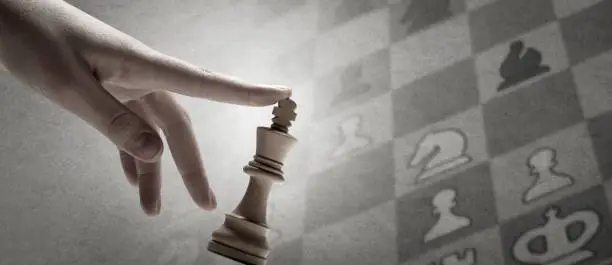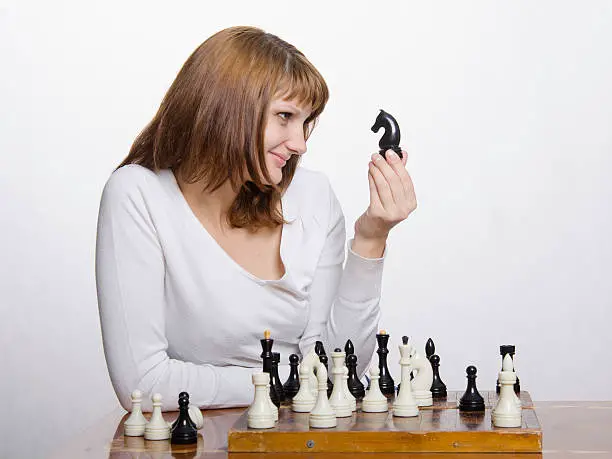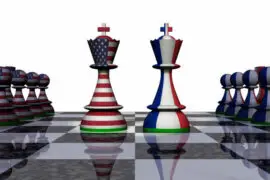Why is Chess Gendered?
Contents
- 1 Why is Chess Gendered?
- 2 Historical Perspective
- 3 Gender Disparities in Chess
- 4 Cultural and Social Factors
- 5 Stereotypes and Bias
- 6 Efforts to Promote Gender Equality in Chess
- 7 The Debate on Separate Women’s Tournaments
- 8 Role Models and Inspirational Figures
- 9 Promoting Inclusivity and Gender Neutrality
- 10 Conclusion
Chess, the age-old game of strategy and intellect, is not just about kings and queens; it’s about challenging norms and pushing boundaries. Yet, under the checkered surface of this beloved pastime, there exists a complex web of gender disparities that has puzzled and concerned enthusiasts for generations. In this article, we will embark on a journey to understand why chess is gendered, exploring the historical, cultural, and societal aspects that have given rise to this phenomenon.
Historical Perspective
To truly grasp the gendered nature of chess, we must first set the stage historically. Chess, originating as a game for the nobility in India, eventually spread across the globe. It was a game that primarily favored the aristocracy, where kings, knights, and bishops ruled the board, while queens, with their limited moves, played a secondary role. This mirrored the societal norms of the time, where women’s influence in decision-making was often relegated to the background.
However, history also shows us that women have always played a pivotal role in challenging these gendered norms. Notable figures like Vera Menchik, a British Women’s World Chess Champion, and Nona Gaprindashvili, who held the title of Women’s World Chess Champion, demonstrated that gender should not determine one’s ability to master the game of kings and queens. Their accomplishments were crucial in breaking the stereotypes that once held women back.
Gender Disparities in Chess
Fast forward to the 21st century, where one would hope that chess would be a level playing field for all. However, statistics paint a different picture. The world of chess is still largely imbalanced, with men overwhelmingly dominating the field. Let’s delve into the data, highlighting the issues that necessitate change.
Recent studies reveal that only a small percentage of female players are engaged in professional chess. This underrepresentation in the chess community can be attributed to a complex interplay of factors. “Gender composition” and “societal factors” are keywords that come into play, revealing the intricate nature of this problem.
But why do these gender disparities persist in chess?
Cultural and Social Factors
Here’s where we encounter the heart of the issue. Stereotypes and biases deeply entrenched in our culture and society play a pivotal role in perpetuating the gender gap in chess. As a society, we have historically associated intellectual pursuits, such as chess, with masculinity. This misguided belief stems from outdated notions that intelligence is inherently male-dominated, and women excel in areas that require different skills.
Media and popular culture also bear their share of responsibility in reinforcing these stereotypes. Consider the portrayal of male chess players as genius strategists while women are often relegated to the role of a beautiful distraction. These portrayals, whether subtle or overt, influence the choices of young girls considering chess. They send a message that this intellectual arena may not be welcoming to them.
Stereotypes and Bias
The insidious impact of stereotypes and bias becomes more evident when we scrutinize the common misconceptions surrounding women in chess. Many believe that women lack the competitive edge required for chess, attributing their struggles to their gender. These beliefs perpetuate the cycle of bias and discrimination.
Let’s address these misconceptions head-on: it’s not that women are less capable; it’s that societal and cultural constructs have created an uneven playing field. These biases, often unconscious, shape our perception of female chess players and affect the recognition and opportunities they receive.
Efforts to Promote Gender Equality in Chess
In response to these challenges, various initiatives and organizations have emerged with the mission of leveling the chessboard. They aim to encourage more women and girls to enter the chess world, advocating for equal opportunities. Women’s tournaments and chess programs designed specifically for girls play a crucial role in nurturing female talent and breaking the cycle of underrepresentation.
These initiatives create environments where young girls can pursue their love of chess without the heavy weight of gender stereotypes on their shoulders. They provide platforms for them to develop their skills, gain recognition, and aspire to reach the highest levels of the game.
The Debate on Separate Women’s Tournaments
An ongoing debate surrounds the existence of separate women’s tournaments. Proponents argue that these events provide a nurturing environment for female players to excel, free from the weight of gender stereotypes. They argue that such competitions can empower women to compete on an equal footing with men.
On the other side of the debate are critics who believe that separating men and women in chess perpetuates the idea that women are not on par with their male counterparts. They argue that true gender equality should mean that both genders compete together on a single, level playing field.
Role Models and Inspirational Figures
Amidst this gendered chess landscape, we must not overlook the female chess players who have shattered glass ceilings and set examples for future generations. Players like Judit Polgár, a Hungarian grandmaster, made history by defeating some of the greatest male chess players in the world.
Their stories of determination, perseverance, and triumph in the face of gender-related challenges serve as beacons of hope for girls and women who aspire to make their mark in the world of chess. These role models demonstrate that with dedication and skill, anyone can succeed in chess, regardless of gender.
Promoting Inclusivity and Gender Neutrality
The path to achieving gender equality in chess is clear: we must promote inclusivity and gender neutrality. Chess should be a game where everyone feels welcome, and where recognition is based on skills and passion rather than gender.
Creating an environment where players are recognized for their abilities, where gender is irrelevant, is a crucial step forward. It will ensure that chess remains a game where intellect reigns supreme and kings and queens rule the board equally.
Conclusion
In conclusion, the question of why chess is gendered is a complex issue, deeply rooted in history, culture, and society. Yet, the chess community is taking steps towards a more inclusive and equitable future. By challenging stereotypes, breaking down barriers, and celebrating the achievements of female chess players, we move one step closer to a chess world where gender is irrelevant, and intellect takes its rightful place as king. It’s a journey we must all embark on, for the love of the game and the sake of equality.










